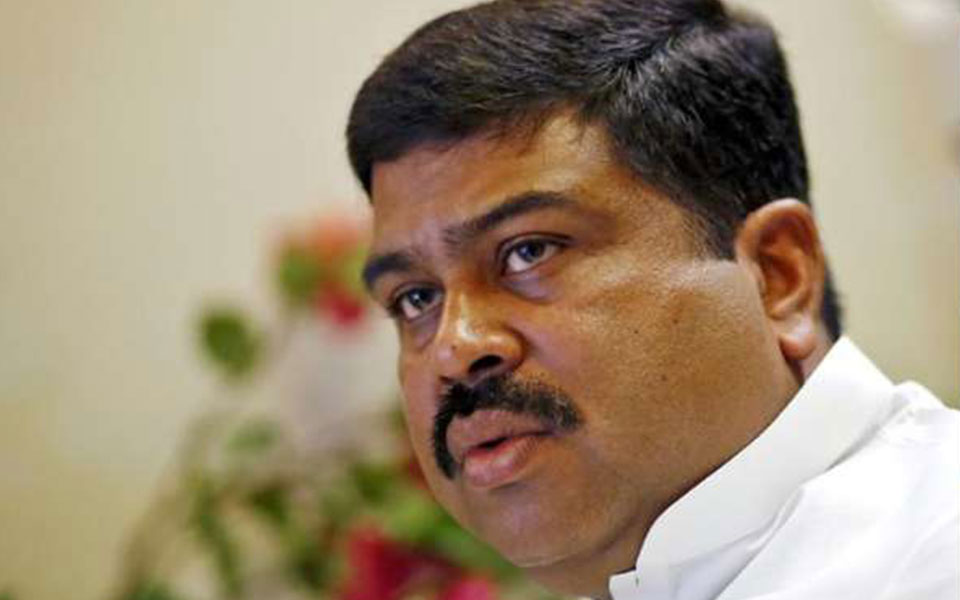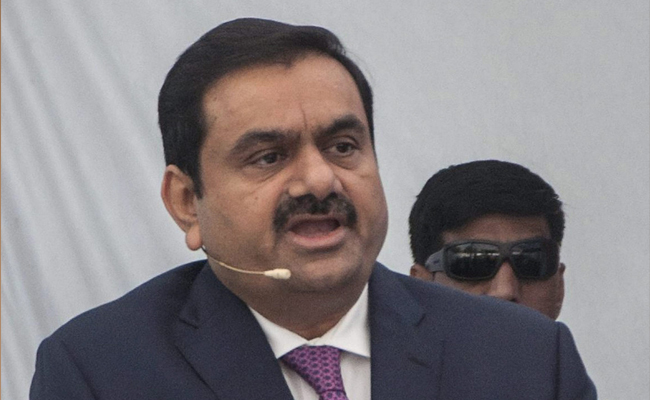New Delhi, June 6: Sternly ruling out any rollback of deregulation of fuel prices, Oil Minister Dharmendra Pradhan on Wednesday said despite having the burden of repaying oil bonds, the government will take full responsibility of keeping fuel prices in check and ensuring they don't go out of reach of the common man.
Addressing a press conference here, Pradhan reiterated that the government was working on a long-term solution to address oil price fluctuations while taking a holistic view of all factors.
He said there was a greater conducive environment to bring petroleum products under the Goods and Services Tax (GST), however adding that the GST Council would have to take a call on that.
"I stand by my statement: the government will take a holistic view. There are three major factors for oil price hike -- geopolitics leading to fluctuation in international crude oil prices, exchange rate fluctuation between dollar and Indian currency, and taxation structure of our country where some taxes are imposed by state governments and (Centre imposes) excise duty," Pradhan said.
"Taking into account all this and while ensuring that India's poor and middle classes do not have to bear the pinch (due to oil prices), the government will take all necessary steps."
Asked if as part of the "long-term plan" to deal with rising fuel prices, the government was considering partial rollback of deregulation, Pradhan said: "That question doesn't arise. It is a reformist government. We cannot go back on reforms."
The Minister said that while reduction in petrol and diesel prices had started, albeit due to international developments, the government is "sensitive and committed towards interests of poor and middle classes".
"No one can predict oil price fluctuations, but I assure (you) that taking into account all factors -- and despite there being some factors beyond our control -- the government will handle this issue with complete sensitivity and will take responsibility for it," he said.
Terming "unfair" the comparisons of fuel prices during the UPA regime -- when crude prices were skyrocketing -- with the current government, Pradhan said inflation was responsible for high prices.
"Inflation has increased significantly and that's why high fuel prices. But we will ensure the prices don't go so high that they get out of the reach of the poor and middle classes."
Referring to Former Finance Minister P. Chidambaram's comments that there was a room for cutting oil prices by as much as Rs 25 per litre, he said: "In the name of oil bonds (issued to oil companies for subsidising fuel), a huge burden has been left by the previous government on the current government. We never complained and are paying off those bonds."
About the possibility of bringing transportation fuel under the new indirect tax regime, the Minister said while GST is imposed on all the processes of the oil sector -- production, pipeline and refineries -- but there is no GST on the finished goods.
"Hence we are not able to realise it (claim input tax credit). That's why petroleum products should be brought under GST," he said, adding that the GST Council is responsible for the same.
"However, while interacting with Chief Ministers, I am getting more and more positive vibes and I feel that it will be brought under GST soon. The reservations related to the new tax regime are going away after its successful implementation," Pradhan said.
Let the Truth be known. If you read VB and like VB, please be a VB Supporter and Help us deliver the Truth to one and all.
New Delhi (PTI): Chief Justice of India Sanjiv Khanna on Tuesday said India has emerged as a vibrant democracy and a geopolitical leader, and the Constitution of the country has helped in this transformation.
India has had a transformative journey from a nation, which under the aftermath and horrors of partition saw widespread illiteracy, poverty, lack of robust democratic system of checks and balances, to one which has now become a self-assured leader, the CJI said.
"But at the back of it is the Constitution of India, which has helped this transformation. It is today a way of life that has to be lived up to," Justice Khanna said, while speaking at the Constitution Day function organised by the Supreme Court Bar Association (SCBA) at the apex court.
Since 2015, November 26 is observed as Constitution Day to commemorate the adoption of the Constitution of India by the Constituent Assembly in 1949. Earlier, the day was observed as Law Day.
Attorney General R Venkataramani, SCBA president and senior advocate Kapil Sibal also addressed the gathering.
In his address, Justice Khanna highlighted the importance and contribution of the Bar and said, "We often refer to the judiciary as persons in robes, that is, the judges, but judiciary equally represents the Bar".
"I cannot visualise the judiciary where the members of the Bar are not a part and parcel of it. You are as much part of the judiciary as the judges," he said.
The CJI said he was a member of the Bar from 1983 to 2005, when he got elevated as a judge, and his tenure as a member of the Bar is longer than his tenure as a judge.
"Judges come from the Bar and go back to the Bar. We belong to the Bar. The better the Bar, the better the judges," he said.
Justice Khanna said the Supreme Court has had a very strong and good legacy and there are decisions right from environmental law, privacy laws, fundamental rights to the basic structure doctrine.
"Many of these decisions, I do not think would have been possible without the contribution and efforts of the member of the Bar," he said.
Justice Khanna said since he has taken over as the CJI, he has made various attempts to look into the issues and problems faced by Bar members.
He referred to the steps taken, including setting up notice boards outside the courtrooms where physical cause list is shown and improving the Wi-Fi services in the top court.
"I have one request to make and I hope it will be taken in the right spirit. I have been repeatedly getting requests for re-circulation of letters of adjournment. I have looked into the data," Justice Khanna said while pointing out that the data showed there were about 9,000 to 10,000 applications or letters for adjournments being circulated every three months.
"So, it is not going to be possible for us to go back to the earlier system. Whatever system we have now adopted, we can, if you come up with some suggestions for improvements, look into it, but going back to the earlier system may be counter-productive," he said.
The CJI said the apex court received about 1,400 applications in the new system in the last 11 months.
"You can see the difference. From 100 applications a day to about 150 applications a month. That's a huge change and let us, therefore, go with the right spirit," he said.
Justice Khanna said today is the day to introspect, to look into and assess the strong points and weaknesses.
"As the Attorney General has rightly pointed out, it is a day when we look at the scorecard. We don't think the scorecard is blank. We have good scores but there are issues which we have to tackle. And let us unifiedly tackle those issues with the members of the Bar and the judiciary both contributing to this...," he said.





